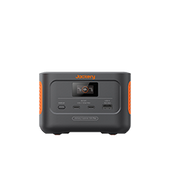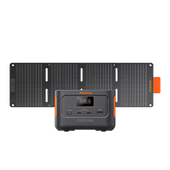How Many Watts Does A Well Pump Use
How many watts a well pump uses depends on the type of pump, the depth of the well, and the amount of water being pumped. In general, a well pump uses between The average power rating of a well pump is about 700 to 800 watts. However, some pumps can use as much as 5,000 watts.
How many watts a well pump use depends on many factors; which horsepower is the most important player? It also depends on how old is your system, the time a well pump works a day, and how much water you are pumping.
Key Takeaways About Well Pump Wattage
- How many watts does a well pump use? An average well pump uses about 700 to 800 watts of electricity; however, the larger pumps can go up to 2000 to 5000 watts.
- Using a well pump for 8 hours a day will consume 6.4 kilowatt-hours a day and 44.8 kilowatt-hours a week.
- Solar power generators are a great choice for running well pumps as they are cost-effective because they are zero fuel cost and can work in off-grid setups.
How Many Watts Does A Well Pump Use?
How many watts a well pump use is an important question because well pumps consume a considerable amount of power and thus can increase your electricity bill drastically. It is also possible that some areas may have cheaper electricity tariffs during certain hours. So running your well pump at off-peak hours can save you money.
Let us analyze the well pump power consumption in detail. Also, note that you will mostly find the well pump rating in horsepower instead of watts. One horsepower is equal to approximately 746 watts. You find the well pump motor size on the pump level.
|
Water Pump Motor Size |
Running Watts |
Starting Watts |
|
1/3 HP |
750 Watts |
1500-3000 Watts |
|
1/2 HP |
900 Watts |
2000-4000 Watts |
|
3/4 HP |
1500 Watts |
3000-4500 Watts |
|
1 HP |
2000 Watts |
4000-6000 Watts |
|
1.5 HP |
2500 Watts |
5000-7500 Watts |
Definition of Volts, Watts, Amps, and kWh
We need some background knowledge to understand how many watts a well pump uses. We need to know a few terms, i.e., volts, amperes, watts, horsepower, etc. So, here are the basic definitions.
Volts (V): Voltage is the speed of electric current passing through an electric circuit. It is measured in volts.
Amps (A): amps measure the electric current flowing through the circuit. It is short for Amperes.
Watts (W): Wattage or watts is a device's energy consumption unit.
Horsepower(HP): a horsepower is also a power unit, defined as 746 watts.
Kilowatt-hours (kWh): kilowatt-hours is the energy consumption over a period of time.
How Many Watts Does A Well Pump Use?
Well, pumps are available in a range of sizes and power consumption. The smaller well pumps can consume 400 to 500 watts. The larger ones can go from 2000 to 5000 watts. However, the average well pump size is 700 to 800 watts. An average well pump will use 5.6 to 6.4 kilowatts for 8 hours.
What Size Generator Do I Need for Well Pump When Off-Grid?
It is evident that well pump use medium to high amounts of energy. So running them can be expensive. Also, when you decide to go off-grid, you need an alternative power supply for your well pump.
Solar generators are the best solution as they are very cost-effective because of no fuel cost. However, it is important to know that the starting watts of a well pump can be higher than the running watts. The running watts are your well pump's power requirement when operating. In comparison, the starting watts are the peak power that the device needs for a while when it starts. It is required for a few minutes only.
The Jackery solar generators are available in various sizes and power ratings. You can use the Jackery solar generator 1000 Pro, 1500 Pro, or 2000 Pro, depending on how many watts your well pump use.
Best Solar Generator for Well Pump When Off-Grid
The Jackery solar generators 1000Pro, 1500Pro, and 2000Plus are the best choices for running a well pump dispensing on how many watts your well pump use. The Jackery solar generators stand out among their peers because they have many benefits.
- These generators are compact, lightweight, and portable. Hence they are easier to transport and set up while going off-grid.
- The Jackery solar generators are weather resistant. They work in harsh weather like very high temperatures and rain.
- The Jackery generators have smart BMS that maintains a fluctuation-free power supply to the devices.
- Multiple ports in the generator facilitate powering up multiple pieces of equipment simultaneously.
Best for Portable- Jackery Solar Generator 1500 Pro
The Jackery Solar Generator 1500 Pro is a compact energy solution for off-grid setups. It is very easy to carry with the included handle and is very light. With multiple output ports, including both AC and DC output ports, it offers a power capacity of 1512 Wh. Solutions in off-grid setups. It has an efficient battery management system to ensure smooth current flow without fluctuations in your device. It has overvoltage and short-circuits protection, so you can use it on your device without worrying about safety. The Jackery Solar Generator 1500 Pro provides 1512 watt-hours of power with fast charging options via solar panels, AC outlets, or carports.

Best for Off-Grid - Jackery Solar Generator 2000 Plus
The Jackery solar generator 2000 Plus has a large wattage capacity of 2042.8-watt hours and includes a battery management system for protection against overvoltage and short circuits. It can be charged in just 2 hours using an AC outlet or 2.5 hours using solar panels. Additionally, it has multiple output ports, allowing for the simultaneous connection of multiple devices.

|
Series |
Capacity |
Output Ports |
Pump Watts |
Hours |
|
Jackery Solar Generator 2000 Plus
|
2042.8 wh |
4 x AC Output:120V~ 60Hz, 20A Max, AC Output(×1):120V~ 60Hz, 25A Max, AC Total Output,3000W Max, 6000W surge peak 2 x USB-A Output: Quick Charge 3.0, 18W Max 2 x USB-C Output: 100W Max, (5V, 9V, 12V, 15V, 20V up to 5A) |
750 |
2.3 H |
|
900 |
1.9 H |
|||
|
1500 |
1.1 H |
|||
|
Jackery Solar Generator 2000 Pro |
2160 wh
|
AC Output:120V, 60Hz, 2200W (4400W Peak) USB-A Output: Quick Charge 3.0, 18W Max USB-C Output: 100W Max, (5V, 9V, 12V, 15V, 20V up to 5A) |
750 watts |
2.4 H |
|
900 watts |
2.04H
|
|||
|
1500 watts |
1.2 H |
|||
|
2000 Watts |
55 Minutes |
|||
|
Jackery Solar Generator 1500 Pro
|
1512Wh
|
AC Output: 120V, 60Hz, 1800W (3600W Peak) USB-A Output: Quick Charge 3.0, 18W Max USB-C Output: 100W Max, (5V, 9V, 12V, 15V, 20V up to 5A) |
750 watts |
1.7 H |
|
900 watts |
1.4 H |
|||
|
Jackery Solar Generator 1000 Pro
|
1002Wh
|
AC Output: 120V, 60Hz, 1000W (2000W Peak) USB-A Output: Quick Charge 3.0, 18W Max USB-C Output: 100W Max, (5V, 9V, 12V, 15V, 20V up to 5A) |
750 watts |
1.1 H |
|
900 watts |
56 Minutes
|
** All the estimates above are based on 85% performance. We incorporate a 15% performance loss during operation and transmission. Here is how you can calculate the working hours of your well pump depending on how many watts a good pump use.
Working time = Capacity Wh * 0.85 / operating wattage of your well pump
FAQ about Well Pump Wattage
How Much Electricity Does A Well Pump Use In 24 Hours?
An average well pump uses 700 to 800 watts so if you run it 6 to 8 hours, it will consume 4.2 to 6.4 kilowatt hours a day.
Can A Solar Generator Run A Well Pump
Yes, the high-capacity solar generators can run average well pumps. Depending on how many watts a well pump uses, even smaller solar generators can support the smaller one. Jackery offers various sizes of solar generators and solar panels so that you can make your bundle based on your requirements.
Does Running a Well Pump on Solar Generators Saves Money?
Solar generators are inexpensive to run because they have zero fuel cost when you charge them with solar panels. Also, they are very low maintenance and weather resistant, so practically, there is no operational cost.
Conclusion
How many watts does a well pump use? An average well pump operates at 700 to 800 watts of power. However, the exact calculation of the watt requirement depends on the size of the well pump, the water suction capacity, and the hours of usage. The Jackery solar power generators can help you lower your electricity cost and work in off-grid setups.






















































































